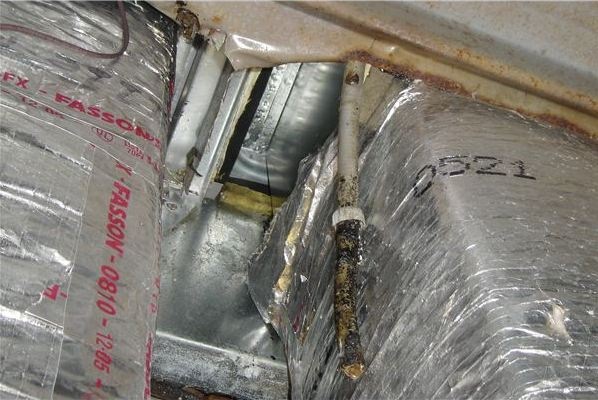Read about methods involving how to repair a water-damaged ceiling: different materials require different procedures.
Removing wet drywall and moisture from other materials is key, as is inspecting the structural integrity of the ceiling.

This article discusses the methods on how to repair a water-damaged ceiling, specifically when dealing with gypsum drywall or plaster.
Removing wet insulation and drying the repair area is also treated, along with the necessity for inspecting the structural materials for additional damage.
Read Also:
Water damage can affect a number of different ceiling materials, but gypsum-board (drywall) and acoustic ceiling tiles are the most susceptible. Either of these two materials ought to be replaced when water damage has occurred.
With ceiling tiles, simply remove and replace any damaged tiles and insulation. Other materials, such as wood paneling or plaster can often be dried out. Evaluate the extent of the damage and the type of material involved.
First and foremost, though, it is necessary to address the cause of the water damage, before any repair operations take place.
The reasons can be various, ranging from a leaky roof to condensation from an air conditioning duct. Make sure that the source of the problem is identified and repaired.
Drywall and plaster repairs will be discussed at length in the following sections.
To begin to address how to repair a water-damaged ceiling, it is necessary to first evaluate the extent of the damage. Gypsum drywall that has been damaged by water should be replaced, even if it has dried completely.
Generally, there will be visual markings, often light-yellow to brown stains on the surface of the drywall. These markings will show through most light-colored paints.
If the damage is recent, use a moisture meter to measure the moisture content, and mark out the area that needs replacing. It can be difficult to determine how far the moisture has spread within the drywall, without the proper equipment.
If unsure, it is better to remove a larger area rather than to leave damaged drywall in the ceiling. Mark out an area, and use a T-square to draw the area out as square as possible. Then use a carpet knife and drywall saw to cut the drywall out cleanly.
Also, take the proper safety precautions, and when possible, do not work alone when removing or hanging drywall on the ceiling.
When replacing a small area, it is possible to use 1″ x 4″ wood to join the new drywall to the old drywall, using the wood at all joints. However, when replacing large areas, make sure to use the joists according to regulations.
Plaster can often be successfully dried, as long as the water damage did not loosen the bond between the plaster and the subsurface, which is often wood, especially in older homes.
Any plaster that feels loose or sags from the ceiling should be removed and patched. However, make sure that the area is sufficiently dry before patching.
Use an angle grinder to cut a perimeter into the plaster so that when scraping you do not remove material beyond the repair area.
It may be possible to substitute ¼” drywall to replace plaster in some cases, as long as the thickness of drywall is relatively close to the thickness of the layer of plaster.
However, this only works if there is sufficient backing to screw the drywall to, but will make the repair considerably easier and faster.
Other materials, such as wood paneling, can sometimes be dried successfully without replacement. The most important thing is to make sure that any source of moisture is removed.
Wet insulation, for example, will continue to hold moisture in a ceiling for a very long time, and may lead to other problems, such as mold growth.
Once the damaged material has been removed, it will be necessary to inspect and dry any structural components that may have retained moisture. Wood joists are susceptible to water damage, especially if contact with water is prolonged.
In the case of a constant and prolonged leak in a roof, the materials that support the roof structure may have been affected, as well. Make sure to inspect the surrounding structural materials before repairing the ceiling.
If moisture is present, let the area air dry, or use air movers and dehumidifiers to speed up the process. If the outside air is dry, use natural ventilation as well. A moisture meter is a fast and accurate way to measure moisture content and determine that the area is sufficiently dry.
While not exhaustive of the subject, these topics to address the most common methods of how to repair a water-damaged ceiling. If in doubt about your assessment, or the extent of the damage, then always consult a professional.
More information about water softeners is explained here at freerangela.com